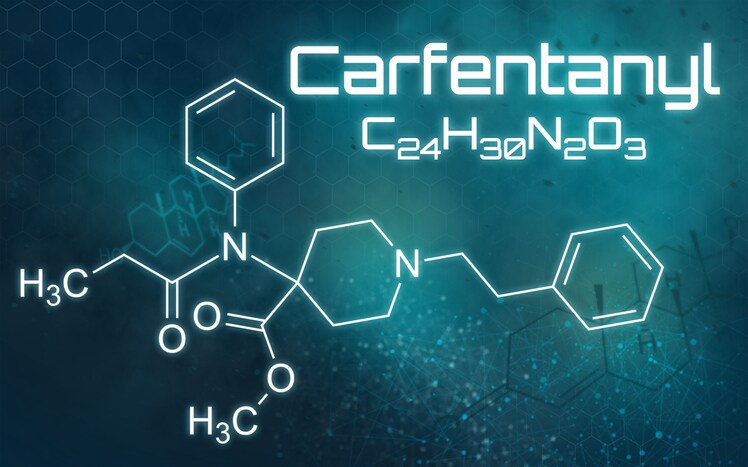 Synthetic opioids such as fentanyl are relatively easy and inexpensive to create nowadays. And unfortunately, these drugs are becoming ever more potent, requiring less of the substance to deliver the same level of intoxication.
Synthetic opioids such as fentanyl are relatively easy and inexpensive to create nowadays. And unfortunately, these drugs are becoming ever more potent, requiring less of the substance to deliver the same level of intoxication.
Consider a comparison of heroin and fentanyl, both opioid drugs. Both are extremely potent, fast-acting, and can be lethal in as little as one dose. Heroin is derived from morphine, a natural substance that is removed from the seed of the opium poppy. Heroin is 25 times more potent than morphine and is distributed as a white or brown powder. Fentanyl, however, is a synthetic opioid that is 50-100 times more potent than morphine. Fentanyl is often manufactured in clandestine laboratories and is cheaper and easier to obtain than heroin; it is often used as a cutting agent or filler for heroin.
Carfentanyl is a synthetic opioid much more powerful than fentanyl. Fentanyl is estimated to be 25–50 times stronger than heroin and 50–100 times stronger than morphine. About 2–3 milligrams of fentanyl can be lethal. That’s roughly the size of 5–7 grains of salt. Carfentanyl, however, is estimated to be 100 times stronger than fentanyl, or 10,000 times stronger than morphine. As little as .00002 grams can kill a person.
Very tiny amounts of high-potency synthetic opioids like carfentanyl makes them easier to traffic, or as the concept is known today, micro-traffic, across a distribution network. Many agents transporting small, difficult to detect packets of a wide variety of potent, synthetic drugs is a more successful strategy than trying to smuggle bricks of a narrow range of drugs across a border as was done in the past. What is trending now, as far as the trend in the market goes, is that we are no longer seeing raw material, e.g., big bricks of fentanyl and cocaine and heroin coming over to be cut up by distributors in the United States, but rather, finished products in micro traffic quantities and distribution.
The business of narcotics has changed, and that pace continues to accelerate. Staying ahead of emerging trends and issues in the production, distribution and trafficking of narcotics is a prime focus of interdiction forces today including US Customs and Border Protection (CBP).
Protecting borders is especially difficult, but it is crucial to detect and deter dangerous substances before they reach the public. Customs and Border Protection (CBP) organizations charged with stopping narcotics, new synthetic drugs, and other illicit substances from crossing borders need narcotics identification tools that provide immediate analysis at the port of entry. There are handheld Raman/FTIR instruments that provide highly accurate results directly at the scene, enabling officers, customs agents, border control, and other personnel to scan substances in a single, definitive test.
However, detection of these narcotics – especially the very tiny amounts of high-potency synthetic opioids — with standard FTIR and Raman spectroscopies is difficult, because Raman and FTIR really are considered bulk detection capabilities, reliable for drugs in concentrations 10 wt%, but not as easy for concentrations below that.
There is technology now that takes Raman instruments to a new level — a lower level that is – to accurately detect these lower drug concentrations in the field. SERS, or Surface-Enhanced Raman Spectroscopy, also known as Surface-Enhanced Raman Scattering, is a technology that’s been around for a while, but when combined with the existing capabilities of the analyzer, it suddenly makes it possible to regularly and reliably identify concentrations below 10 weight%, and in certain circumstances, chemicals down to 1% by weight in a given sample, which borderlines on trace capability.
The Raman/FTIR/SERS combination analyzer is interdiction’s newest technology to help stop the distribution of illicit drugs in communities all over the world – no matter how small the drug packets or dose.
- Read the white paper: Lesser and Lesser becoming Deadlier and Deadlier: Detecting Low Doses of Lethal Opioids
- Watch a video showing the technology in action.
Post Author: Marlene Gasdia-Cochrane.


Leave a Reply